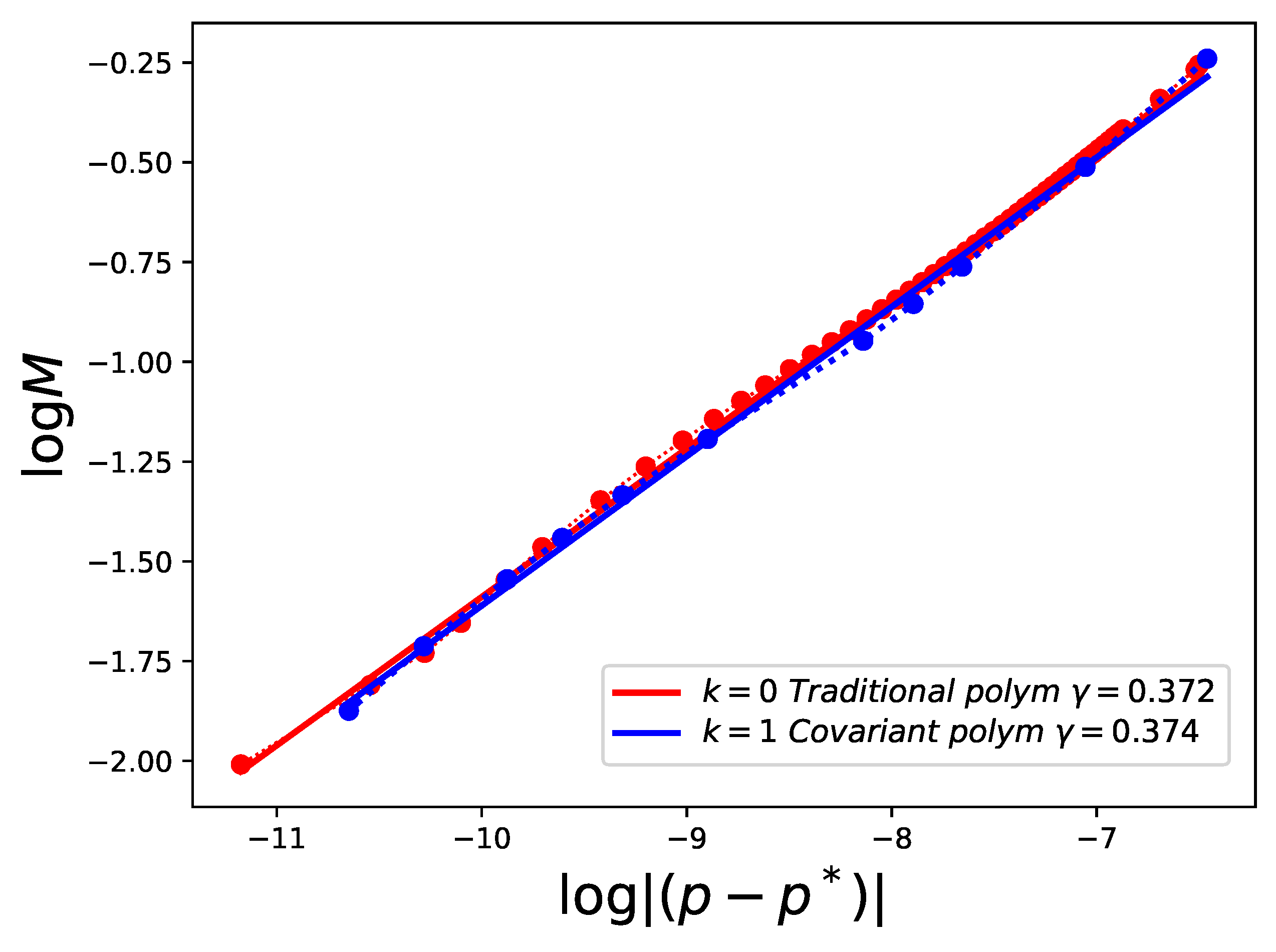A Covariant Polymerized Scalar Field in Semi-Classical Loop Quantum Gravity
Abstract
1. Introduction
2. Spherically Symmetric General Relativity in New Variables
3. A New Covariant Polymerization
4. Relation to Other Polymerized Approaches
5. Discussion
Author Contributions
Funding
Acknowledgments
Conflicts of Interest
References
- Ashtekar, A.; Lewandowski, J. Projective techniques and functional integration for gauge theories. J. Math. Phys. 1995, 36, 2170–2191. [Google Scholar] [CrossRef]
- Bojowald, M. Loop quantum cosmology. Living Rev. Rel. 2005, 8, 11. [Google Scholar] [CrossRef] [PubMed]
- Ashtekar, A.; Bojowald, M.; Lewandowski, J. Mathematical structure of loop quantum cosmology. Adv. Theor. Math. Phys. 2003, 7, 233. [Google Scholar] [CrossRef]
- Ashtekar, A.; Pawlowski, T.; Singh, P. Quantum nature of the big bang: Improved dynamics. Phys. Rev. D 2006, 74, 084003. [Google Scholar] [CrossRef]
- Corichi, A.; Vukasinac, T.; Zapata, J.A. Polymer Quantum Mechanics and its Continuum Limit. Phys. Rev. D 2007, 76, 044016. [Google Scholar] [CrossRef]
- Thiemann, T. Kinematical Hilbert spaces for Fermionic and Higgs quantum field theories. Class. Quant. Grav. 1998, 15, 1487–1512. [Google Scholar] [CrossRef][Green Version]
- Bojowald, M. Black-Hole Models in Loop Quantum Gravity. Universe 2020, 6, 125. [Google Scholar] [CrossRef]
- Kramer, P.; Moshinsky, M.; Seligman, T. Non-bijective canonical transformations and their representations in quantum mechanics. In Group Theoretical Methods in Physics; Kramer, P., Rieckers, A., Eds.; Lecture Notes in Physics; Springer: Berlin/Heidelberg, Germany, 1978; Volume 79. [Google Scholar]
- Anderson, A. Canonical Transformations in Quantum Mechanics. Ann. Phys. 1994, 232, 292–331. [Google Scholar] [CrossRef]
- Deenen, J. Nonbijective Canonical Transformations in Quantum Mechanics. J. Phys. A 1981, 14, L273–L276. [Google Scholar] [CrossRef]
- Benitez, F.; Gambini, R.; Lehner, L.; Liebling, S.; Pullin, J. Critical collapse of a scalar field in semiclassical loop quantum gravity. Phys. Rev. Lett. 2020, 124, 071301. [Google Scholar] [CrossRef] [PubMed]
- Choptuik, M. Universality and scaling in gravitational collapse. Phys. Rev. Lett. 1993, 70, 9. [Google Scholar] [CrossRef] [PubMed]
- Gambini, R.; Pullin, J.; Rastgoo, S. Quantum scalar field in quantum gravity: The vacuum in the spherically symmetric case. Class. Quant. Grav. 2009, 26, 215011. [Google Scholar] [CrossRef]
- Gambini, R.; Olmedo, J.; Pullin, J. Quantum black holes in Loop Quantum Gravity. Class. Quant. Grav. 2014, 31, 095009. [Google Scholar] [CrossRef]
- Tibrewala, R. Inhomogeneities, loop quantum gravity corrections, constraint algebra and general covariance. Class. Quant. Grav. 2014, 31, 055010. [Google Scholar] [CrossRef]
- Gambini, R.; Olmedo, J.; Pullin, J. Loop quantum black hole extensions within the improved dynamics. Front. Astron. Space Sci. 2021, 8, 647241. [Google Scholar] [CrossRef]
- Bojowald, M. Noncovariance of “covariant polymerization” in models of loop quantum gravity. Phys. Rev. D 2021, 103, 126025. [Google Scholar] [CrossRef]
- Bojowald, M. Time Physics in Background-Independent Theories of Quantum Gravity. Universe 2021, 7, 251. [Google Scholar] [CrossRef]
- Ashtekar, A.; Pawlowski, T.; Singh, P. Quantum nature of the big bang. Phys. Rev. Lett. 2006, 96, 141301. [Google Scholar] [CrossRef] [PubMed]
- Alonso-Bardaji, A.; Brizuela, D. Anomaly-free deformations of spherical general relativity coupled to matter. Phys. Rev. D 2021, 104, 084064. [Google Scholar] [CrossRef]
- Alonso-Bardaji, A.; Brizuela, D.; Vera, R. A nonsingular spherically symmetric black-hole model with holonomy corrections. Phys. Rev. D 2022, 106, 024035. [Google Scholar] [CrossRef]
- Gambini, R.; Olmedo, J.; Pullin, J. Spherically symmetric loop quantum gravity: Analysis of improved dynamics. Class. Quant. Grav. 2020, 37, 205012. [Google Scholar] [CrossRef]

Publisher’s Note: MDPI stays neutral with regard to jurisdictional claims in published maps and institutional affiliations. |
© 2022 by the authors. Licensee MDPI, Basel, Switzerland. This article is an open access article distributed under the terms and conditions of the Creative Commons Attribution (CC BY) license (https://creativecommons.org/licenses/by/4.0/).
Share and Cite
Gambini, R.; Benítez, F.; Pullin, J. A Covariant Polymerized Scalar Field in Semi-Classical Loop Quantum Gravity. Universe 2022, 8, 526. https://doi.org/10.3390/universe8100526
Gambini R, Benítez F, Pullin J. A Covariant Polymerized Scalar Field in Semi-Classical Loop Quantum Gravity. Universe. 2022; 8(10):526. https://doi.org/10.3390/universe8100526
Chicago/Turabian StyleGambini, Rodolfo, Florencia Benítez, and Jorge Pullin. 2022. "A Covariant Polymerized Scalar Field in Semi-Classical Loop Quantum Gravity" Universe 8, no. 10: 526. https://doi.org/10.3390/universe8100526
APA StyleGambini, R., Benítez, F., & Pullin, J. (2022). A Covariant Polymerized Scalar Field in Semi-Classical Loop Quantum Gravity. Universe, 8(10), 526. https://doi.org/10.3390/universe8100526







